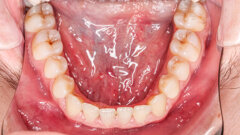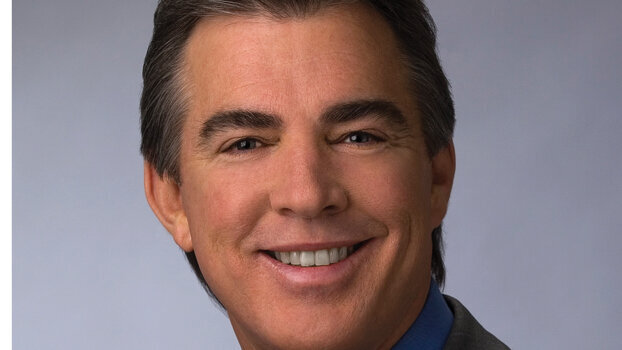Shortly after the excitement of the rotary file revolution wore off, the next frontier in shaping technology became the search for faster cutting efficiencies. This is very understandable and similar to our continuing search for faster and faster computers.
However, experienced clinicians started seeing overfills from transportation, shortened canals, apical ripped canal termini, over-shaped coronal regions and cyclic fatigue failures that hadn’t occurred with their safer, slower files. The first-order question in file selection became, 'safe or fast?' Landed-blade instruments with radiused-tip geometry were much safer in terms of avoidance of transportation, but non-landed blades with aggressive cutting tips were faster cutting.
The advent of GTX Files with M-Wire has eliminated that difficult decision — they are the first rotary shaping instruments that deliver speed of cutting with safety from transportation and breakage.
M-Wire, a new rhombohedral-phase nickel titanium metal used in GTX Files, has radically improved their resistance to cyclic fatigue. However, Dentsply/Tulsa is not the only company with R-phase NiTi (the sweet spot between austenite-phase and martensite-phase NiTi). While R-phase NiTi will become the new industry standard for addressing cyclic fatigue, it will never solve the problem of dangerous file geometries.
The radial lands on GTX Files have been optimized by varying the width of those lands along the length of the file. This geometrical change vastly improves cutting efficiency without derangement of the canal path, a claim that no file set without lands can make. Furthermore, the decreased flute angle has significantly increased GTX File’s flexibility over other landed instruments, simultaneously doubling the chip space between the flutes for longer cutting time before clogging.
Another important, yet underappreciated, design feature of GTX Files is their limited maximum flute diameter. Keeping the cutting flute diameters limited to 1 mm controls the amount of coronal enlargement during the shaping procedure — critical to the maintenance of the structural integrity of roots and to the avoidance of strip perforation.
All of these innovations in design geometry have resulted in a file set that typically cuts ideal shape in most canals with one to three instruments, and in as little time as 30–45 seconds. That is why geometry matters.
When we think of good design, the images that often come to mind are of things that are beautiful, new, modern and, perhaps, expensive. We do not always ...
Artificial intelligence (AI) has seen a rapid surge in popularity and accessibility in dentistry, and more broadly in healthcare. Publicly available AI ...
CHICAGO, US: Fewer young dentists are buying practices early in their careers—but that does not mean they are abandoning the idea of ownership altogether....
Selling a dental practice is a watershed moment for any clinician, and it is essential that they avoid costly pitfalls in the transition process. According ...
Advances in technology in dentistry have rapidly improved diagnostics, streamlined treatments and made the dental chair a safer, more comfortable place. ...
It’s difficult to watch certain television commercials, read a newspaper, see an online advertisement, a webinar, social media content or a recorded video...
LONDON, England: National Health Service (NHS) dentistry is in crisis, and at the heart of the problem is the alarming loss of dental professionals. ...
MENDOZA, Argentina: Dental education is at a cross-roads as Generation Z enters the classroom. Born between 1997 and 2012, this cohort has grown up with ...
The rapid rise of digital dentistry has given dentists worldwide many benefits, but it has also increased risks. Dental teams must learn to leverage these ...
“Before contacting you, I read all of your lovely reviews.” My clients are hearing that from patients every week nowadays. I’m not sure who actually ...
Live webinar
Mon. 12 January 2026
9:00 am EST (New York)
Prof. Judith Jones D.D.S; M.P.H., Prof. Kakuhiro Fukai D.D.S., Ph.D, Dr. Bathsheba (Bethy) Turton
Live webinar
Wed. 14 January 2026
12:00 pm EST (New York)
Dr. Théo Laplane, Dr. Robert Gottlander DDS
Live webinar
Fri. 16 January 2026
12:00 pm EST (New York)
Live webinar
Mon. 19 January 2026
1:00 pm EST (New York)
Philipp Kopp, Michael Seeber
Live webinar
Thu. 22 January 2026
2:00 pm EST (New York)
Dr. Nicola M. Grande DDS, PhD
Live webinar
Wed. 28 January 2026
8:00 am EST (New York)
Live webinar
Wed. 28 January 2026
11:00 am EST (New York)
Prof. Dr. Jan-Frederik Güth



 Austria / Österreich
Austria / Österreich
 Bosnia and Herzegovina / Босна и Херцеговина
Bosnia and Herzegovina / Босна и Херцеговина
 Bulgaria / България
Bulgaria / България
 Croatia / Hrvatska
Croatia / Hrvatska
 Czech Republic & Slovakia / Česká republika & Slovensko
Czech Republic & Slovakia / Česká republika & Slovensko
 France / France
France / France
 Germany / Deutschland
Germany / Deutschland
 Greece / ΕΛΛΑΔΑ
Greece / ΕΛΛΑΔΑ
 Hungary / Hungary
Hungary / Hungary
 Italy / Italia
Italy / Italia
 Netherlands / Nederland
Netherlands / Nederland
 Nordic / Nordic
Nordic / Nordic
 Poland / Polska
Poland / Polska
 Portugal / Portugal
Portugal / Portugal
 Romania & Moldova / România & Moldova
Romania & Moldova / România & Moldova
 Slovenia / Slovenija
Slovenia / Slovenija
 Serbia & Montenegro / Србија и Црна Гора
Serbia & Montenegro / Србија и Црна Гора
 Spain / España
Spain / España
 Switzerland / Schweiz
Switzerland / Schweiz
 Turkey / Türkiye
Turkey / Türkiye
 UK & Ireland / UK & Ireland
UK & Ireland / UK & Ireland
 Brazil / Brasil
Brazil / Brasil
 Canada / Canada
Canada / Canada
 Latin America / Latinoamérica
Latin America / Latinoamérica
 USA / USA
USA / USA
 China / 中国
China / 中国
 India / भारत गणराज्य
India / भारत गणराज्य
 Pakistan / Pākistān
Pakistan / Pākistān
 Vietnam / Việt Nam
Vietnam / Việt Nam
 ASEAN / ASEAN
ASEAN / ASEAN
 Israel / מְדִינַת יִשְׂרָאֵל
Israel / מְדִינַת יִשְׂרָאֵל
 Algeria, Morocco & Tunisia / الجزائر والمغرب وتونس
Algeria, Morocco & Tunisia / الجزائر والمغرب وتونس
 Middle East / Middle East
Middle East / Middle East
















































To post a reply please login or register